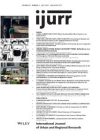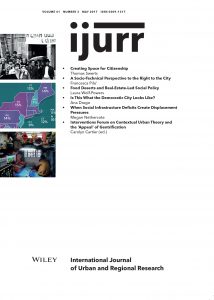Under advanced capitalism, gentrification converges with the post-Keynesian ‘unhinging’ of the state from the project of social reproduction, including its responsibilities for collective consumption (e.g. housing, schools). Gentrification research scrutinizes this convergence through the ongoing assault on social/affordable housing, and yet anaemic housing welfare is not its endpoint. The social contract is further fractured through the ongoing discreditation and dismantling of the full gamut of legacies of the publicly regulated Keynesian inner city, including essential social infrastructure. Focusing on public schools, as an essential site for social reproduction, this article explores how the struggle for the city under neoliberal gentrification may be emerging along additional (non-housing) vectors. Based on a qualitative study of families’ experiences of poor public education provision in central Melbourne (Australia), this article argues that the exclusionary effects of gentrification likely exceed residential encroachment as state subsidization of residents continues to yield to the subsidization of capital. In particular, this article identifies life-stage specific, infrastructure-related displacement pressures wrought by a state failure to provide adequate public primary schools in the ‘regeneration’ of central Melbourne, and it illustrates how these pressures prompt housing strategies that unevenly divest families of the locational advantages secured in the inner city. Highlighting the role of public school deficits in the reluctant suburbanization of lesser-resourced families assists in foregrounding state complicity in displacement dynamics and the potential for these to magnify socio-economic, gendered and socio-spatial inequalities across the city.

